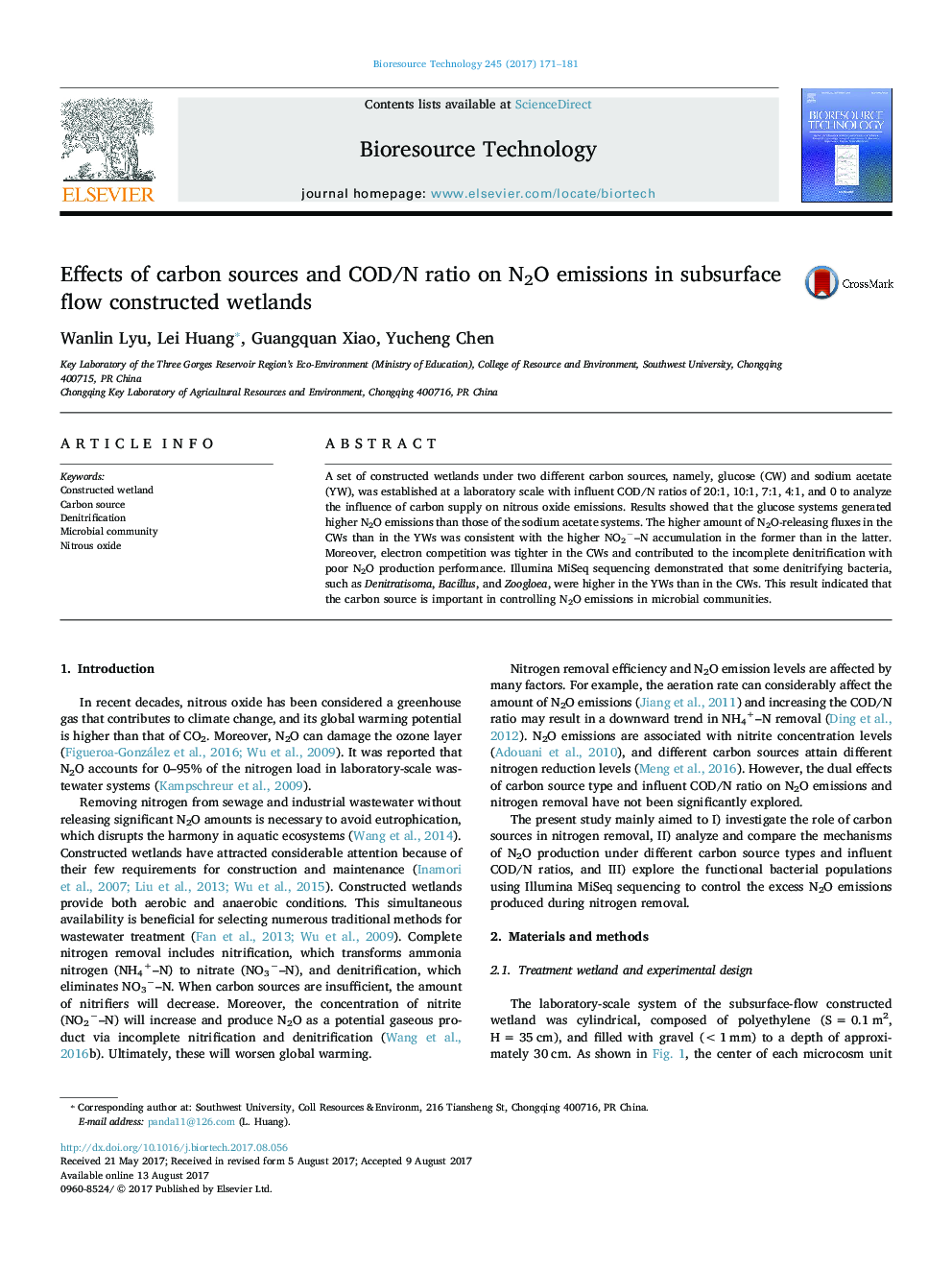| Article ID | Journal | Published Year | Pages | File Type |
|---|---|---|---|---|
| 4996767 | Bioresource Technology | 2017 | 11 Pages |
â¢The average N2O emissions with NaAC was about one-tenth of Glu.â¢Higher N2O emissions was achieved with Glu because of the higher COD removal rate.â¢NaAC promote the denitrification efficiency and N2O reduction.â¢The abundances of Denitratisoma, Bacillus, and Zoogloea were higher with NaAC.
A set of constructed wetlands under two different carbon sources, namely, glucose (CW) and sodium acetate (YW), was established at a laboratory scale with influent COD/N ratios of 20:1, 10:1, 7:1, 4:1, and 0 to analyze the influence of carbon supply on nitrous oxide emissions. Results showed that the glucose systems generated higher N2O emissions than those of the sodium acetate systems. The higher amount of N2O-releasing fluxes in the CWs than in the YWs was consistent with the higher NO2â-N accumulation in the former than in the latter. Moreover, electron competition was tighter in the CWs and contributed to the incomplete denitrification with poor N2O production performance. Illumina MiSeq sequencing demonstrated that some denitrifying bacteria, such as Denitratisoma, Bacillus, and Zoogloea, were higher in the YWs than in the CWs. This result indicated that the carbon source is important in controlling N2O emissions in microbial communities.
